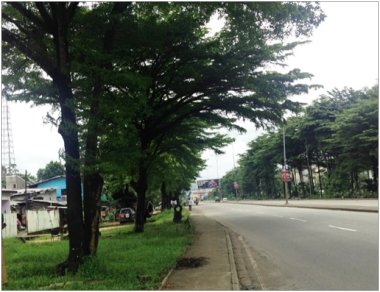Urban Population Increasing with Decreasing Trees

Countries the world over were recently engaged in commemorating the 2018 edition of the International Forests Day. Celebrated under the theme: “Forests and Sustainable Cities,” this year’s celebration provided a platform for governments and administrators within urban areas in Cameroon and beyond to reflect on the importance of trees in solving urban challenges like air pollution, increasing atmospheric temperature, and water scarcity amongst others. The question of the day is how many administrators in urban areas in Cameroon like the governors, senior divisional officers, government delegates, divisional officers, mayors and traditional rulers in urban areas actually reflected on these?, and if they did, what is the outcome of their reflection and what measures are they putting in place to promote urban forestry within their respective urban centres.
It is but an open secret that more and more urban centers in Cameroon are increasingly getting hotter and noisier than usual with massive population influx from rural areas. This rural exodus has besides increasing atmospheric temperature, induced water scarcity, and pollution. With the currently increasing urbanization, there has also been an increase in energy demands, increase greenhouse gas emissions and consequently increase in climate change impacts experienced in the city.
In the midst of these, trees that are supposed to serve as natural filters and noise absorbers, improve microclimates, conserve biodiversity, protect and improve the quality of natural resources, are cut down for the construction houses and other facilities to accommodate the increasing urban population with very limited or no sustainable reforestation plan thereafter.
It’s true that a few cities in Cameroon have trees and green spaces dotted here and there within the city, though sometimes off the center of the city where they are needed most. For example, research findings by George Amahnui in 2017 revealed that urban forests occupy 3754.5072 hectares of the Douala city but the trees were mostly found in the mangroves.
Within the Buea Municipality, though there a few trees along the major high way with green spaces at a few roundabouts, there are a good number of houses emanating like mushrooms at sites that, in most developed countries should have been used as a green space. A typical example is the Mile 18 and Mile 17 water catchments and the road pavement behind GTTC Buea.
While waiting on the government to create green spaces and plant trees, individual families in urban centers must also cultivate the habit of planting trees, most especially economic trees like mango, guava, plump, pear, apple and many others. Such trees will besides protecting the environment, generate income for the families and other nutritive functions.
Green spaces and trees need to be evenly distributed across every city in Cameroon with a total surface area large enough to accommodate the urban population needs. Such a move will promote and inspire a better relationship with the environment while supporting important services
By B. Shancho Ndimuh







